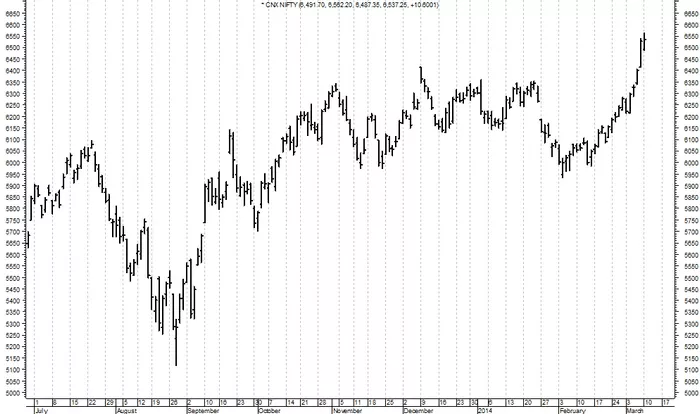Bank stocks are often seen as the backbone of a stable economy, offering steady dividends and growth potential. However, recent trends have shown a decline in bank stocks, leaving investors and analysts questioning the underlying causes. This article will explore the reasons behind the fall in bank stocks, covering both macroeconomic factors and industry-specific challenges.
Understanding the Basics of Bank Stocks
Before diving into the reasons for the decline, it is essential to understand what bank stocks represent. Banks are financial institutions that play a critical role in the economy by accepting deposits, offering loans, and providing various financial services. Bank stocks represent ownership in these institutions, and their performance is often tied to the health of the broader economy.
The Relationship Between Banks and the Economy
Banks are closely tied to the overall economy, and their performance often reflects broader economic trends. When the economy is strong, banks typically benefit from increased lending activity, higher interest rates, and stronger consumer confidence. Conversely, when the economy weakens, banks may face challenges such as rising loan defaults, lower interest rates, and reduced demand for financial services.
Key Metrics for Bank Stocks
Investors often look at specific metrics when evaluating bank stocks, including:
Net Interest Margin (NIM): The difference between the interest income generated by banks and the amount of interest paid out to depositors.
Loan Loss Provisions: Funds set aside by banks to cover potential loan defaults.
Return on Equity (ROE): A measure of profitability that indicates how efficiently a bank is using shareholders’ equity.
Understanding these metrics can help investors gauge the health of a bank and its potential for future growth.
See Also: Where to Invest in Esports Stocks?
Macroeconomic Factors Impacting Bank Stocks
Several macroeconomic factors have contributed to the recent decline in bank stocks. These factors include interest rate fluctuations, economic slowdowns, inflation concerns, and regulatory changes.
1. Interest Rate Fluctuations
Interest rates are a crucial factor for banks, as they directly impact the net interest margin (NIM). Banks earn money by borrowing at lower interest rates and lending at higher rates. When interest rates are low, banks’ NIM shrinks, reducing profitability.
Impact of Low-Interest Rates
The prolonged period of low-interest rates, often driven by central banks’ monetary policies, has squeezed banks’ profit margins. With central banks in many countries keeping interest rates near zero to stimulate the economy, banks have struggled to generate income from their traditional lending activities.
Rising Interest Rates and Uncertainty
On the other hand, the prospect of rising interest rates can also create uncertainty for bank stocks. While higher rates can improve NIM, they can also lead to higher borrowing costs for consumers and businesses, potentially slowing economic growth and increasing the risk of loan defaults.
2. Economic Slowdowns and Recessions
Economic slowdowns and recessions pose significant challenges for banks. During periods of economic contraction, consumers and businesses may struggle to repay loans, leading to an increase in loan defaults. Banks must then increase their loan loss provisions, which can erode profits and investor confidence.
Global Economic Uncertainty
The global economy has faced several challenges in recent years, including the COVID-19 pandemic, geopolitical tensions, and supply chain disruptions. These factors have contributed to economic uncertainty, reducing consumer confidence and business investment. As a result, banks have faced increased pressure on their loan portfolios and profitability.
3. Inflation Concerns
Inflation is another critical factor impacting bank stocks. When inflation rises, the purchasing power of money decreases, leading to higher costs for goods and services. Central banks may respond by raising interest rates to combat inflation, but this can create a challenging environment for banks.
Inflation and Interest Rates
While higher interest rates can benefit banks by improving NIM, they can also lead to higher borrowing costs for consumers and businesses. This can reduce demand for loans and increase the risk of defaults, negatively impacting bank profitability.
4. Regulatory Changes
Regulatory changes can also have a significant impact on bank stocks. Governments and regulatory bodies often implement new rules and regulations to ensure the stability of the financial system. However, these regulations can sometimes increase operational costs and limit banks’ ability to generate profits.
Increased Capital Requirements
One example of regulatory changes impacting banks is the increase in capital requirements. Following the 2008 financial crisis, regulators implemented stricter capital requirements to ensure banks could withstand economic shocks. While these measures have strengthened the financial system, they have also limited banks’ ability to leverage their assets and generate higher returns.
Compliance Costs
Banks also face rising compliance costs due to increased regulatory scrutiny. These costs can reduce profitability and impact the overall performance of bank stocks.
Industry-Specific Challenges
In addition to macroeconomic factors, banks face several industry-specific challenges that have contributed to the decline in their stock prices. These challenges include technological disruptions, competition from fintech companies, and changing consumer behavior.
1. Technological Disruptions
The banking industry has been undergoing significant technological changes, with digital banking and fintech companies disrupting traditional banking models. These technological advancements have created both opportunities and challenges for banks.
Rise of Fintech Companies
Fintech companies have emerged as strong competitors to traditional banks, offering innovative financial products and services. These companies often operate with lower overhead costs and can provide more competitive rates and fees. As a result, banks have faced increased competition, which has pressured their profitability and stock prices.
Adapting to Digital Banking
Banks have also had to invest heavily in digital banking infrastructure to keep up with changing consumer preferences. While these investments are necessary to remain competitive, they can also be costly and impact short-term profitability.
2. Changing Consumer Behavior
Consumer behavior has also shifted in recent years, with more people opting for digital banking services and alternative financial products. This shift has forced banks to rethink their business models and adapt to new market dynamics.
Decline in Branch Banking
The decline in branch banking has been a significant challenge for traditional banks. As more consumers turn to online and mobile banking, banks have had to reduce their physical presence, leading to branch closures and layoffs. This shift has impacted customer relationships and the overall performance of bank stocks.
3. Competition from Non-Banking Financial Institutions
Non-banking financial institutions, such as investment firms and insurance companies, have also increased competition in the financial sector. These institutions often offer similar products and services as banks but operate with different regulatory requirements, giving them a competitive advantage.
Impact on Profit Margins
The increased competition from non-banking financial institutions has put pressure on banks’ profit margins. As consumers and businesses have more options for financial services, banks must offer more competitive rates and fees, reducing their profitability.
Investor Sentiment and Market Reactions
Investor sentiment plays a crucial role in the performance of bank stocks. Negative sentiment can lead to a sell-off in bank stocks, further driving down their prices. Several factors can influence investor sentiment, including earnings reports, economic data, and news events.
1. Earnings Reports and Profit Warnings
Earnings reports provide investors with insights into a bank’s financial health and performance. When banks release disappointing earnings or issue profit warnings, it can lead to a decline in stock prices. Investors may lose confidence in the bank’s ability to generate profits, leading to a sell-off in the stock.
Missed Earnings Expectations
Banks that miss earnings expectations can see a sharp decline in their stock prices. Even if the bank is still profitable, failing to meet analysts’ expectations can create negative sentiment and lead to a decline in stock prices.
2. Economic Data and Indicators
Economic data and indicators, such as GDP growth, unemployment rates, and inflation, can also impact investor sentiment. Negative economic data can lead to concerns about the overall health of the economy and the financial sector, driving down bank stocks.
Impact of Economic Indicators
For example, if economic data shows a slowdown in GDP growth or an increase in unemployment, investors may become concerned about the potential impact on banks’ loan portfolios and profitability. This can lead to a decline in bank stocks as investors seek to reduce their exposure to the financial sector.
3. News Events and Geopolitical Tensions
News events and geopolitical tensions can also impact investor sentiment and drive down bank stocks. Events such as natural disasters, political instability, or changes in government policies can create uncertainty in the financial markets, leading to a decline in bank stocks.
Market Reactions to News Events
For example, if a country faces political instability or enacts policies that could negatively impact the financial sector, investors may become concerned about the potential risks to banks’ operations and profitability. This can lead to a sell-off in bank stocks as investors seek to minimize their exposure to potential risks.
Long-Term Outlook for Bank Stocks
While bank stocks have faced significant challenges in recent years, the long-term outlook for the sector remains uncertain. Several factors could influence the future performance of bank stocks, including changes in interest rates, economic conditions, regulatory policies, and technological advancements.
1. Potential for Recovery
Despite the challenges facing the banking sector, there is potential for recovery in bank stocks. If economic conditions improve and interest rates rise, banks could see an increase in profitability, leading to a recovery in stock prices.
Impact of Economic Recovery
A strong economic recovery could boost consumer and business confidence, leading to increased demand for loans and financial services. This could help banks improve their profitability and drive up stock prices.
2. Risks and Uncertainties
However, there are also risks and uncertainties that could impact the long-term outlook for bank stocks. Ongoing economic uncertainty, regulatory changes, and technological disruptions could continue to pressure the banking sector and limit the potential for recovery.
Adapting to Technological Changes
Banks will need to continue adapting to technological changes and competition from fintech companies to remain competitive. Those that can successfully navigate these challenges may be better positioned for long-term growth.
Conclusion
The decline in bank stocks can be attributed to a combination of macroeconomic factors, industry-specific challenges, and investor sentiment. While the long-term outlook for bank stocks remains uncertain, banks that can adapt to changing market dynamics and improve their profitability may be better positioned for recovery. Investors should carefully consider these factors when evaluating bank stocks and make informed decisions based on their risk tolerance and investment goals.
[inline_related_posts title=”You Might Be Interested In” title_align=”left” style=”list” number=”3″ align=”none” ids=”3189,3192,3262″ by=”categories” orderby=”rand” order=”DESC” hide_thumb=”no” thumb_right=”no” views=”no” date=”yes” grid_columns=”2″ post_type=”” tax=””]





























